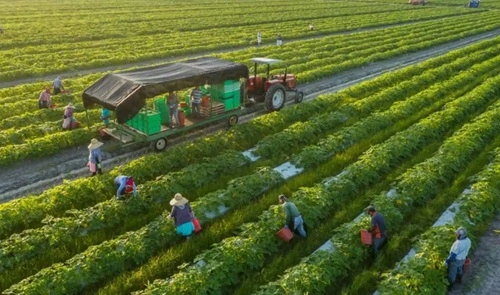As of January 17, 2025, organic farming in India has witnessed significant growth, driven by increasing consumer awareness, government initiatives, and a global shift towards sustainable agricultural practices. A comprehensive SWOT analysis—evaluating Strengths, Weaknesses, Opportunities, and Threats—provides insights into the current state and future prospects of organic farming in India.
Strengths
1. Diverse Agro-Climatic Conditions: India’s vast and varied agro-climatic zones support the cultivation of a wide range of crops, facilitating year-round organic farming. This diversity enables the production of various organic products, catering to both domestic and international markets.
2. Government Support and Policies: The Indian government has been promoting organic farming through schemes like the Paramparagat Krishi Vikas Yojana (PKVY) and the Mission Organic Value Chain Development for North Eastern Region (MOVCDNER). These initiatives provide financial assistance, training, and support for certification, encouraging farmers to adopt organic practices.
3. Growing Consumer Demand: With rising health consciousness and environmental awareness, there is an increasing demand for organic products among Indian consumers. This trend is bolstered by the perception of organic foods being healthier and free from harmful chemicals.
4. Leading Position in Organic Producers: India boasts the highest number of organic producers globally, with approximately 2.3 million farmers engaged in organic agriculture. This large base of producers strengthens the country’s capacity to meet both domestic and export demands.

Weaknesses
1. Limited Infrastructure and Market Access: Many organic farmers, especially smallholders, face challenges related to inadequate infrastructure, such as storage facilities and transportation. Additionally, limited access to markets hinders their ability to sell produce at fair prices.
2. High Certification Costs: Obtaining organic certification can be expensive and time-consuming, particularly for small-scale farmers. The complexity of the certification process may discourage farmers from transitioning to organic methods.
3. Yield Variability: Organic farming often results in lower yields compared to conventional farming, especially during the initial transition period. This yield gap can affect farmers’ income and food security, making them hesitant to adopt organic practices.
Opportunities
1. Expansion of Organic Exports: The global demand for organic products is on the rise. India has the potential to increase its organic exports, with projections aiming to double organic exports to $1 billion by FY26. This expansion can enhance foreign exchange earnings and provide better income opportunities for farmers.
2. Technological Advancements: The adoption of modern technologies, such as digital platforms for market linkages, precision farming, and blockchain for traceability, can improve efficiency, transparency, and profitability in organic farming.
3. Government Initiatives and Incentives: The Indian government’s focus on sustainable agriculture and plans to introduce incentives for organic and natural farming can encourage more farmers to adopt organic practices, thereby increasing the area under organic cultivation.
Threats
1. Market Competition and Price Fluctuations: The organic market is becoming increasingly competitive, which can lead to price fluctuations. Farmers may face challenges in securing stable and remunerative prices for their produce.
2. Climate Change and Environmental Challenges: Organic farming is more susceptible to climate variations due to its reliance on natural inputs. Unpredictable weather patterns can adversely affect crop yields and quality, posing risks to farmers’ livelihoods.
3. Pesticide Residue Norms in Export Markets: Strict pesticide residue norms in developed markets can pose challenges for Indian organic exports. Ensuring compliance with these standards requires stringent quality control measures, which can be resource-intensive.
Conclusion
Organic farming in India, as of 2025, presents a landscape of significant strengths and promising opportunities, tempered by notable challenges and threats. The country’s diverse agro-climatic conditions, supportive government policies, and a growing consumer base favor the expansion of organic agriculture. However, addressing infrastructural limitations, certification hurdles, and yield variability is crucial. By leveraging technological advancements, capitalizing on export potential, and implementing supportive government initiatives, India can strengthen its position in the global organic market. Proactive measures to mitigate threats, such as market competition and environmental challenges, will be essential to ensure the sustainable growth of organic farming in the country.














